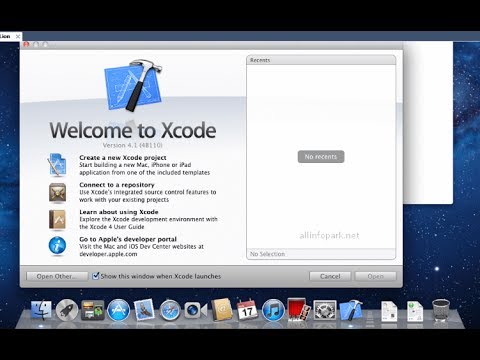-->
Jun 14, 2016 Aye. This served its purpose well, and I appreciate everyone's contributions and journey with us through 10.12/Xcode 8 being prerelease but let's shuffle things off into individual issues at this point as we have in previous years. Xcode 11 was publicly released on September 20, 2019. On June 22, 2020, at the Apple Worldwide Developers Conference, Xcode version 12 was announced; a beta version was released the same day. Xcode 12 introduced support for Swift 5.3 and requires macOS 10.15.4 or later. Xcode 12 was publicly released on September 16, 2020. The macOS Sierra 10.12.3 Update improves the stability and security of your Mac, and is recommended for all users. This update: Xcode For Os X 10.12.6. Improves automatic graphics switching on MacBook Pro (15-inch, October 2016). This video shows how to set up Simple DirectMedia Layer(SDL) libraries on a Macbook without using IDE like Xcode.The program is compilable from terminal. Dec 04, 2020 Solution no. 2: To keep Xcode 7.3.1 running again besides Xcode 8.2 on macOS Sierra 10.12.2 I had to clean the following folders: Even cleaning the userdata of the specific project was helpful: After restarting the mac and trying to open the project it crashed again because there was already content in this folder.
An important part of the developer workflow is deploying to a device. Xcode 9 introduced the option of deploying to an iOS device or Apple TV through a network, rather than having to hardwire your devices every time you want to deploy and debug your app. This feature has been introduced in Visual Studio for Mac 7.4 and Visual Studio 15.6 release.
This guide details how to pair and deploy to a device over the network.
Requirements
Wireless deployment is available as a feature in both Visual Studio for Mac and Visual Studio.
To use wireless deployment, you must have the following:
- macOS 10.12.4
- The latest version of Visual Studio for Mac
- Xcode 9.0 or later
- A device with iOS 11.0 or tvOS 11.0 and later
- The latest version of Visual Studio
- A device with iOS 11.0 or tvOS 11.0 and later
On your Mac build host, the following components should be installed:
- macOS 10.12.4
- Visual Studio for Mac
- Xcode 9.0 or later
Connecting a Device
In order to deploy and debug wirelessly on your device, you must pair your iOS device or Apple TV with Xcode on your Mac. Once paired, you can select it from the device target list in Visual Studio.
The following pairing process should only need to happen once per device. Xcode will retain the connection settings.
Pairing an iOS device with Xcode

- Open Xcode and go to Window > Devices and Simulators.
- Plug your iOS device into your Mac using a lightning cable. You may need to select to Trust This Computer on your device.
- Select your device and then select the Connect via network checkbox to pair your device:
Pairing an Apple TV with Xcode
Ensure your Mac and Apple TV are connected to the same network.
Open Xcode and go to Window > Devices and Simulators.
On the Apple TV, go to Settings > Remotes and Devices > Remote App and Devices.
Select the Apple TV in the Discovered area in Xcode and enter the verification code displayed on the Apple TV.
Click the Connect button. When it's successfully paired, a network connection icon appears beside the Apple TV.
Deploy to a Device
When a device is connected wirelessly and ready to be used for deployment, it shows up in the device target list, as if the device were connected through USB.
To test on a physical device, the device must be provisioned. Make sure to do this before attempting to deploy to a device.
To deploy to an iOS or tvOS device, use the following steps:
Ensure that your deployment machine and target device are on the same wireless network.
Select your device from the target device list and run the application.
If your device is locked, you'll be prompted to unlock your device. Once the device is unlocked, your app is deployed to the device.
Wireless debugging is automatically enabled after wireless deployment, so you can use previously set breakpoints and continue your debugging workflow as you've always done.
Troubleshooting
Always ensure that your iOS device or Apple TV are connected to the same network as your Mac.
If the device does not show in Visual Studio, check Xcode's Devices and Simulators window.
If Xcode does not show your device as connected, try to pair your device again.
If Xcode does show the device as connected, try restarting Visual Studio and your device.
If you have not yet done so, you will need to provision your device.
If you have problems with this feature that can't be fixed by the previous steps, please file an issue in Developer Community.
Related Links
Xcode 10.12.1 Download
Related Video
Xcode 10.14.6
Find more Xamarin videos on Channel 9 and YouTube.